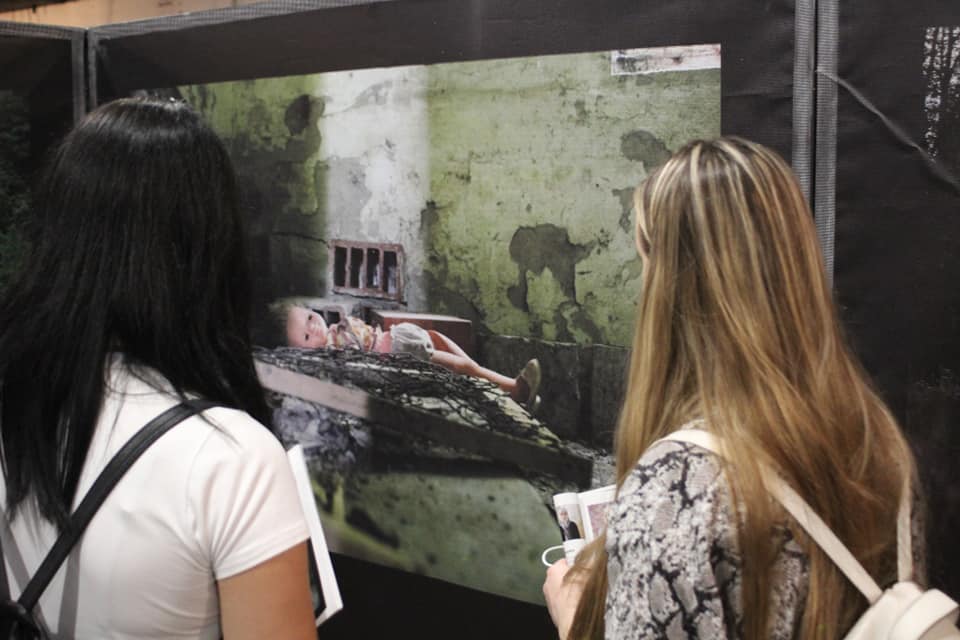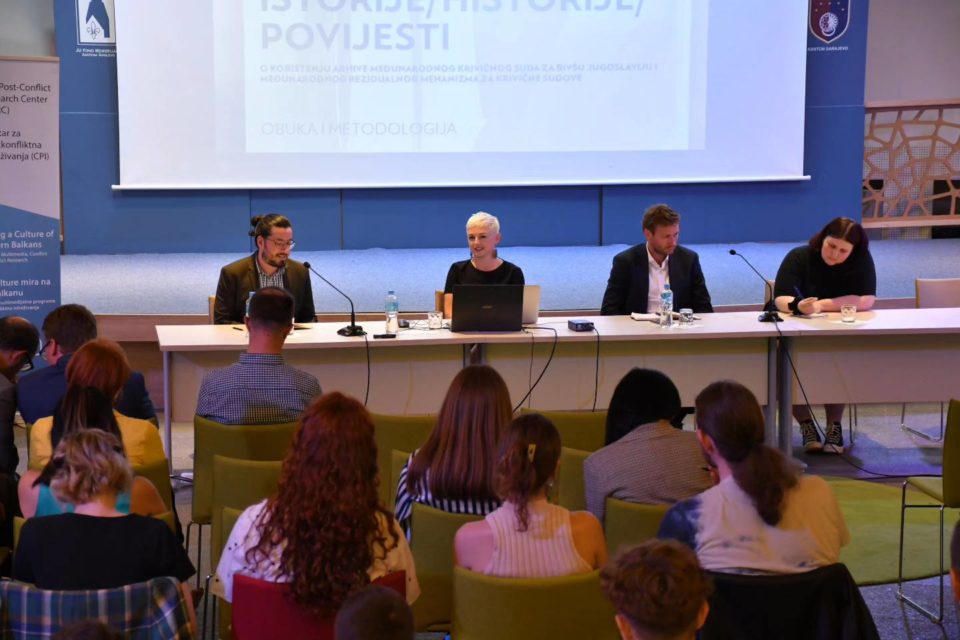
War memorialization in Bosnia and Herzegovina (BiH) remains a persistent and contentious subject. In the absence of state laws and regulations governing memorials, let alone a national commemorative strategy, the country’s memorial landscape is saturated with a wide range of memorialization efforts stemming from all levels of Bosnian society.
Alongside state authorities, numerous non-state actors have significantly shaped memorialization in BiH and continue to do so in various ways, employing bottom-up, creative, and artistic approaches to commemorate the country’s war history. While this creates opportunities for diverse voices to articulate their experiences, it also generates ambiguity regarding the responsibilities and content of commemoration.
Responsibilities and Ambiguities
The absence of uniform state memorialization efforts raises questions about who gets to decide what is commemorated and in what manner. In this context, non-state memorialization provides a bottom-up opportunity for marginalized voices to share their truth, particularly benefiting those whose stories do not neatly align with predominant ethno-nationalist narratives. Civil society actors’ memorialization initiatives offer a platform to commemorate those neglected by state discourses, often despite popular demands for official memorialization. However, non-state memorialization can also be viewed as providing an unmediated space that enables unregulated, potentially harmful, or divisive ideas about who and what should be remembered.
The role of non-state, artistic, and bottom-up memorialization initiatives in shaping BiH’s collective memory landscape is not so straightforward and is entangled in intricate questions.
Ahmed Kulanić, director of the Sarajevo Canton Memorial Fund observes that for the last three decades, three different versions of history have been allowed to exist in the country, which he says have “led to more division, more segregation, and not confronting the facts.”
The Memorial Fund, established in 1997 by Sarajevo Canton, is tasked with constructing and maintaining memorials to war and genocide victims and soldiers of the Army of the Republic of Bosnia and Herzegovina. This mainly takes the form of cemeteries and memorial plaques across not only Sarajevo Canton but the whole of BiH. In this way, it represents a state institution pursuing a carefully structured and fact-based narrative in its memorialization efforts.

However, Kulanić emphasizes that the Fund is by no means alone in establishing commemorative sites and thereby shaping public memory related to the war. There is no central agency overseeing BiH’s memorials, nor is there legislation dictating what and who is memorialized. In a post-war context that has not produced a clear consensus on the “winners or losers,” this has given rise to a patchwork of memorials and commemorative sites across Bosnia and Herzegovina. While many are committed to ensuring the remembrance of otherwise forgotten stories, they are also highly politicized, and lend themselves to polarizing narratives.
Kulanić warns of the historical revisionism accompanying un-regulated memorial narratives. At the same time, however, he notes that institutional authorities, especially at the entity level, also pursue memorialization agendas that are more divisive than reconciliatory. Kulanić is one of many voices speaking out against the glorification of convicted war criminals and their commemoration in public spaces across the country.
On the other hand, unregulated, bottom-up memory initiatives led by non-state actors have the potential to constructively shape collective memory by amplifying voices that are otherwise marginalized, as well as by facilitating grassroots level dialogue and interaction.
Locating marginalized voices
“Since the beginning of the White Armband Day campaign, survivors and local activists have been fighting for a memorial for all of the slain children of Prijedor,” states artist Emir Hodžić, one of the activists behind White Armband Day, an event commemorating those killed during the ethnic cleansing campaigns in and around Prijedor. In 2012, he staged a public demonstration at Prijedor’s main square to draw attention to a story deliberately omitted by the city’s official commemoration programs.
Researcher Zoran Vučkovac documented how members of Izvor, a local women’s association, were denied access to Prijedor’s main square for a commemorative gathering. Hodžić stood alone, a white armband tied around his arm, symbolizing the white cloth that the local non-Serb population was forced to wear following the Serb occupation of the town in May 1992. During this period, 3,176 people, including 102 children, were killed in Prijedor and its surroundings.
Hodžić’s symbolic act was soon endorsed by other activist groups, in an effort to reclaim local public space. Today, May 31st is officially commemorated as White Armband Day in several Bosnian cities, evolving from the grassroots initiative to resist exclusionary state narratives.
Džana Brkanić, Deputy Editor at the BiH branch of the Balkan Investigative Reporting Network (BIRN), echoes Hodžić and Kulanić, emphasizing the divided and unregulated nature of the Bosnian memory landscape. She states that there is “no systematic planning for monuments” and that memorialization has, in many ways, become “a private problem for victims and their families.” According to Brkanić, these families are often instrumentalized for election campaigns, but their demands and needs are seldom met once the political momentum fades.
Brkanić highlights the significance of non-state actors like victims’ associations as drivers of a just, accountable, and sensitive commemoration landscape. For the future, she urges authorities at the federal, entity, and municipal levels “to ask victims what they want,” stressing the shared nature of their grief and the need to consider the emotions of victims. In doing so, Brkanić raises the crucial aspects of emotionality and storytelling in any memorialization endeavor – a feature of remembrance at the very center of artistic commemorative projects championed by civil society organizations like KUMA International.
Remembrance through Art
The inherently artistic dimension of remembrance is central to Kuma International’s commemorative work. Claudia Zini, Kuma’s founder and director, works alongside artists who, in their work, predominantly focus on “the consequences of war, genocide, and events that have happened in their lives in the last 30 years in post-war Bosnia and Herzegovina and abroad, where many of them relocated during and after the conflict.” Such narratives, she continues, reveal “how artists, in times of crisis, can respond and reflect.” Art thereby functions as an individual processing mechanism while also conveying shared sentiments and experiences. In this vein, Zini emphasizes its unique capacities to connect people as well as preserve and make sense of a shared and traumatic past.
As a non-state actor contributing to the mediation of Bosnian collective memory, Kuma assumes a dual role: supporting local artists and providing a platform for their testimonies, while concurrently engaging local audiences and educating international ones. Much of this is done through educational activities, such as the Kuma International Summer School, which has been in operation since 2018. Kuma has also been supporting performative and participatory art installations, such as Smirna Kulenović’s “Our Family Garden” (2021), where 100 women planted marigolds in abandoned war trenches on Sarajevo’s first line of defense.
“If you ask me, possibly the most valuable tool we have is the performativity of art,” says Zini, a trained art historian and curator. She explains that asking a community to engage with and contribute to an art project in an interactive way renders these art projects more accessible and turns passive “consumers” into active actors.
Aida Šehović’s nomadic participatory monument to the Srebrenica Genocide, “Što te nema,” is perhaps the most famous example. Passersby are invited to fill coffee cups with freshly brewed Bosnian coffee in memory of the 8,372 victims killed in the 1995 genocide – all of whom will forever be absent from Bosnian coffee tables. Her work not only defies traditional, permanent, and static conceptions of memorials, but also engages onlookers and bystanders as “custodians of collective memory.”
Commemoration through the arts thus offers an alternative, engaging, and often more accessible avenue for processing war-related memories on both the individual and collective levels. As a “universal language,” Zini reflects that “art gives you freedom to understand according to your own background.” Speaking for the multiplicity of non-state memorialization actors, it raises questions about authority and monopoly over public memorialization and the physical manifestations of collective memory in everyday life.
Although Zini recognizes the limitations of Kuma’s artistic project and her own privilege and position as an “outsider” in Bosnian society, as stressed by Kulanić, memorialization is and will continue to be a “full society project.” It requires continuous implementation “through NGOs, through public institutions, through educational institutions [and] the media” to foster a collective memory landscape of responsibility, sensitivity, and accountability.






